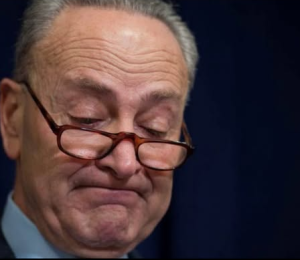In a single session, Senate Republicans approved more than 100 nominees from President Donald Trump. This was one of the biggest confirmation waves in modern history and a key point in the administration’s ongoing efforts to change the way the federal government is run. The move came after months of partisan impasse and a change in procedure that let the chamber approve most of Trump’s executive branch selections all at once instead of one at a time.
The broad confirmations happened late Tuesday after a lengthy day of arguing and following the rules. Herschel Walker, a former NFL player and long-time Trump ally, was one of those confirmed. He will now be the U.S. Ambassador to the Bahamas. Sergio Gor, a senior GOP strategist, was also confirmed as ambassador to India. Many other less well-known selections filled ambassadorial, departmental, and agency positions that had been empty for months. Republicans said that this was because Democrats were blocking the process.
Senate Majority Leader John Thune (R-S.D.) remarked in a press briefing after the vote, “This is about making sure the government works again.” The American people deserve a government that works, not unending political spectacle.

A turning point in the process
A rule change spearheaded by the GOP that rapidly became known as the “nuclear option” made the mass confirmation possible. This move speeds up the confirmation process. The new procedure lets you group and approve non-judicial and non-Cabinet nominees all at once with a single roll call. This cuts down on the hours of debate and procedural problems that have hampered confirmations since the beginning of Trump’s second term.
The regulation does not apply to judicial or Cabinet-level nominations, which still require individual scrutiny. However, it represents a significant procedural improvement in decades. Republican leaders said the amendment was needed to get around what they called Democrats’ intentional delays in order to drag down Trump’s plans.
Democrats, on the other hand, called the move an abuse of power. Senate Minority Whip Dick Durbin (D-Ill.) observed, “This is not efficiency; it’s an erosion of oversight.” “The Senate’s job is to carefully vet nominees, not just stamp them all at once to get political points.”
Internal conflicts and strategic arguments
It took months of debate among Republicans before they decided to change the confirmation procedure. Some conservatives had told Trump to skip the Senate altogether and make recess appointments instead. This would let him temporarily install nominees without getting Senate confirmation, which is a controversial move. Thune and Senate GOP Conference Chair John Barrasso (R-Wyo.) were among the party leaders who turned down the plan. They said it may backfire if Democrats take over again.
Instead, a group of people lead by Sen. Katie Britt (R-Ala.) spent the summer coming up with a compromise on how to do things. The final strategy, which only involved a little bit of talking with Democratic senators, was approved in early October. This decision set the ground for the confirmation rush on Tuesday.
A win for Trump in a symbolic way
The vote was a personal and political victory for President Trump, who has been unhappy with how slowly the Senate confirms nominees for a long time. Trump called the result “historic” and thanked his partners in Congress for “restoring common sense and cutting red tape” when he spoke from the White House on Wednesday morning.
Trump stated, “We’re finally getting good people into good jobs.” “The days of Washington taking its time are over.”
Several well-known people are on the list of confirmed officials. Along with Walker and Gore, Jeanine Pirro, a former judge and Fox News personality, was chosen as Washington, D.C.’s chief federal prosecutor. This selection came after weeks of behind-the-scenes talks and received a lot of criticism from Democrats.
What to expect
Republicans are already hinting that they may utilize the new confirmation standards again before the end of the year, especially to fill the last few ambassadorships and agency leadership positions. The GOP says that the new approach will enable Trump to fill all of the unfilled positions in his administration before the big policy pushes in 2026. There are currently more than 200 open positions in the federal government.
For now, the mass confirmations are one of the best pieces of evidence of how Trump and Senate Republicans have taken back control of Washington’s bureaucracy. We don’t know yet if the strategy will make the government work better or make political divides worse.
